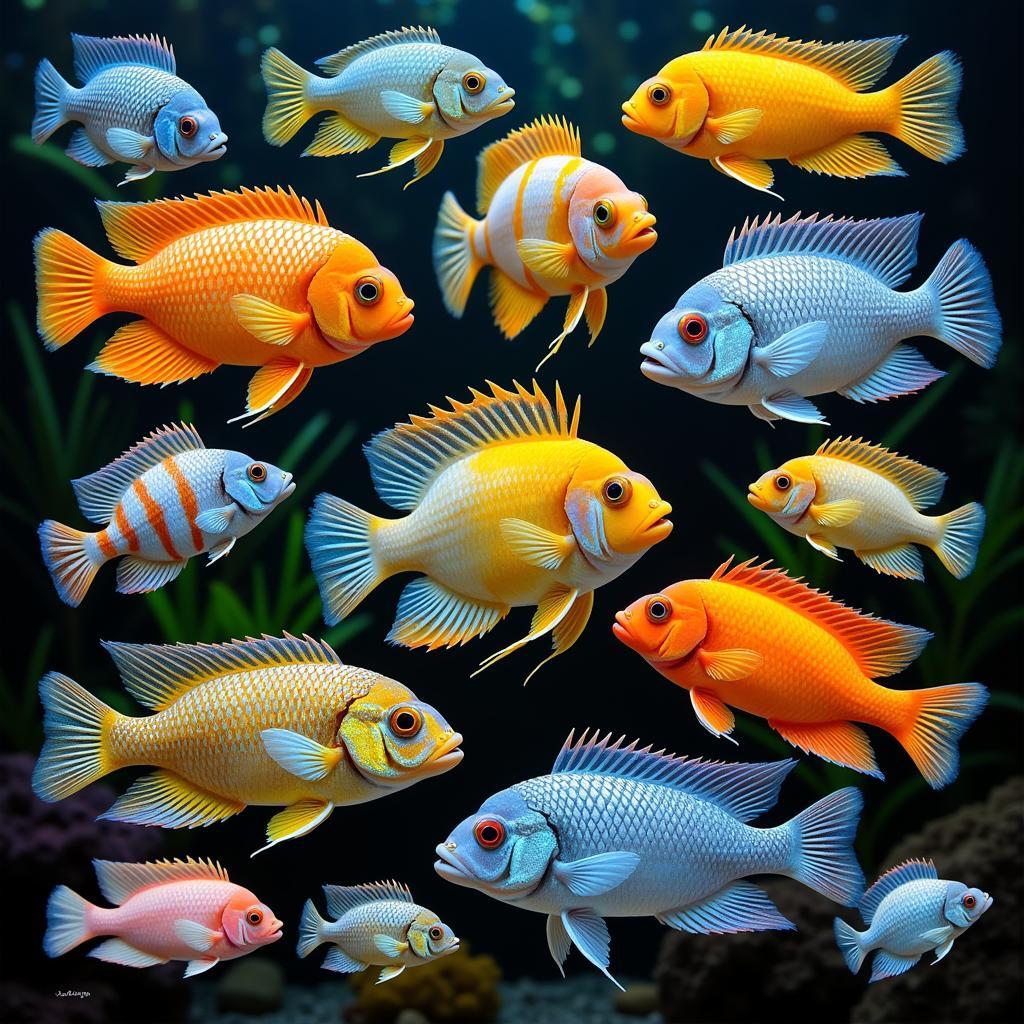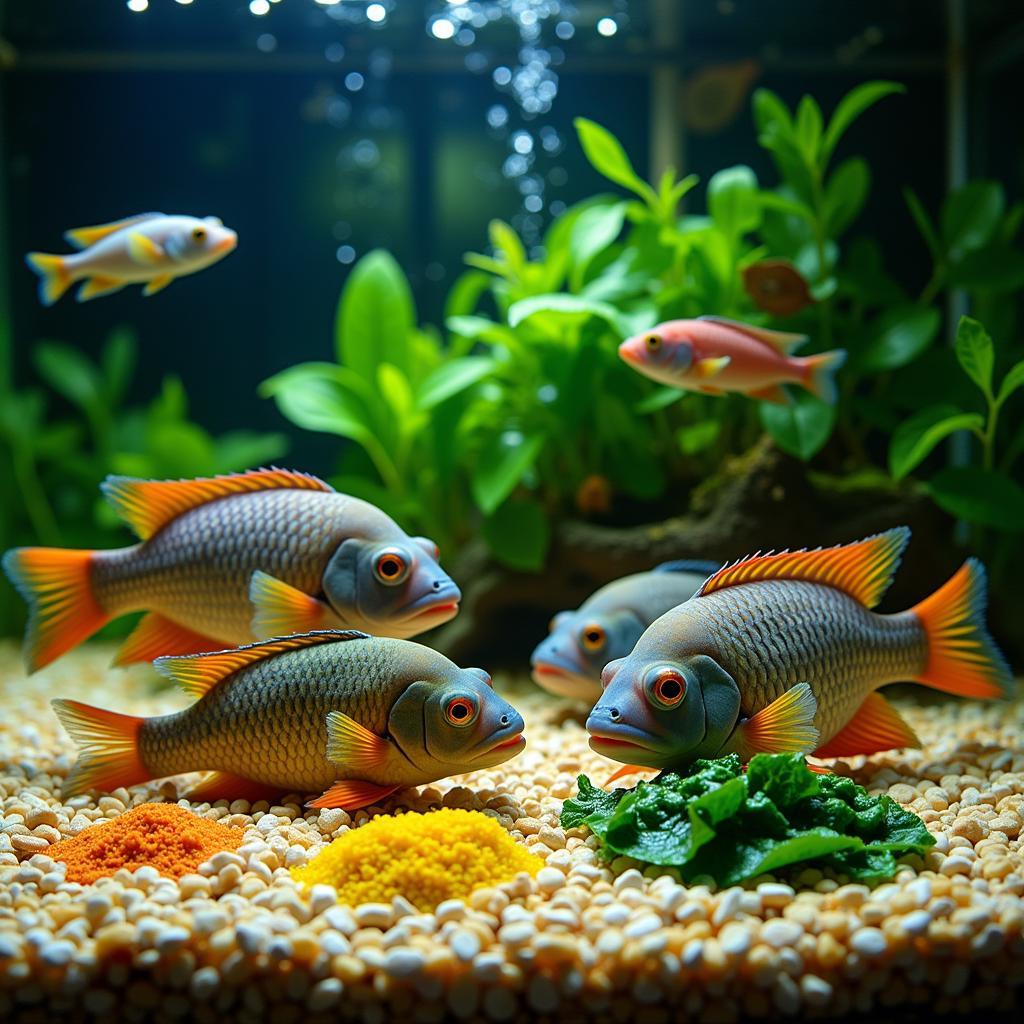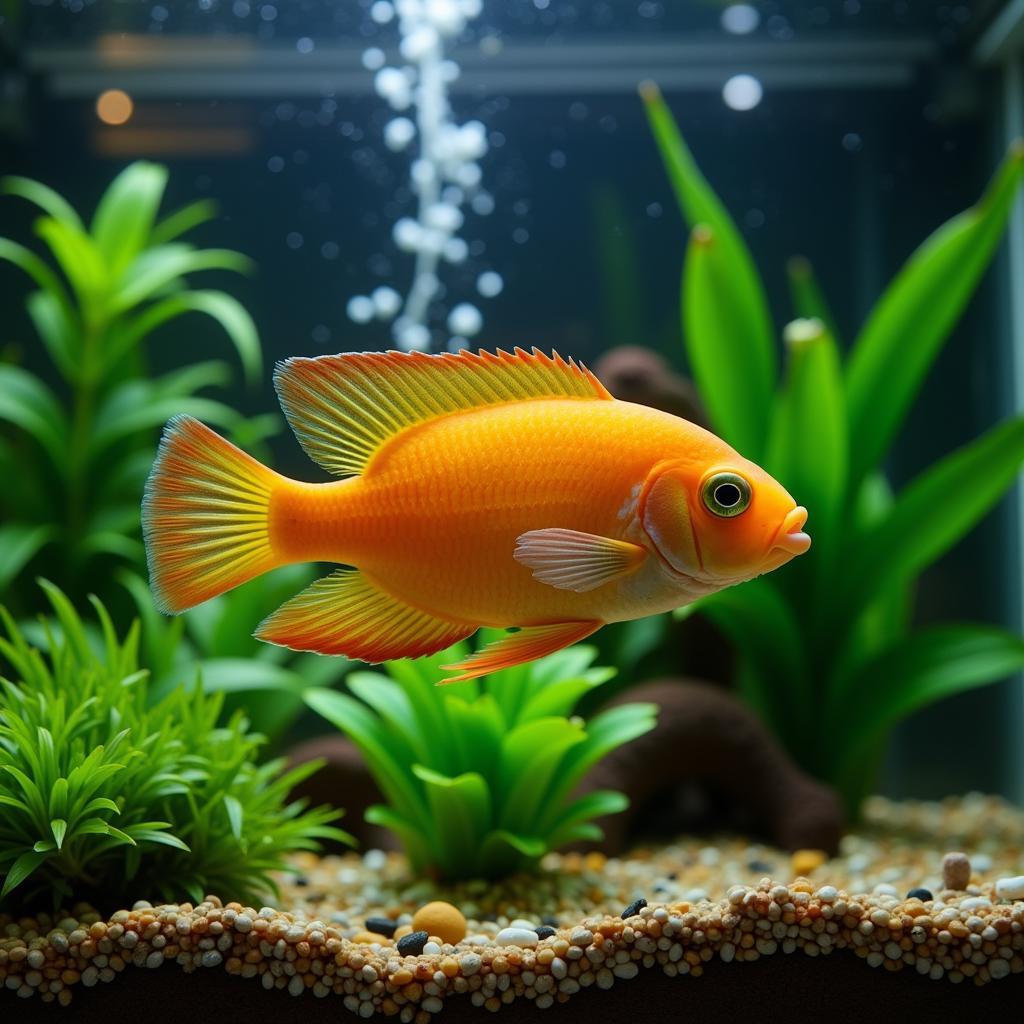Cichlid chef food plays a crucial role in the health, vibrancy, and overall well-being of your aquatic companions. Just like us, cichlids thrive on a varied and balanced diet that caters to their specific needs. But with so many options available, navigating the world of cichlid nutrition can seem overwhelming. Fear not, fellow aquarists! This comprehensive guide will equip you with the knowledge and insights to become a true cichlid chef, crafting culinary delights that will have your finned friends flipping with joy.
 Variety of Cichlid Species
Variety of Cichlid Species
Understanding Your Cichlid’s Dietary Needs
Before diving into specific food choices, it’s essential to recognize that cichlids are not a one-size-fits-all species when it comes to diet. Their natural habitats, feeding behaviors, and evolutionary adaptations have shaped their nutritional requirements.
Geographical Origins and Feeding Habits:
- Herbivores (Plant-Eaters): These cichlids, often hailing from lakes rich in algae and plant life, require a diet rich in plant-based matter. Think spirulina, algae wafers, and blanched vegetables like spinach and zucchini.
- Carnivores (Meat-Eaters): Originating from environments teeming with insects, crustaceans, and smaller fish, these cichlids crave protein. Their menu should include high-quality options like bloodworms, brine shrimp, and even small feeder fish (used responsibly).
- Omnivores (Plant and Meat-Eaters): These adaptable eaters strike a balance, enjoying both plant and animal-based foods. A mix of high-quality flakes, pellets, and occasional treats like frozen or live foods will keep them satisfied.
 Cichlids in an Aquarium Feeding
Cichlids in an Aquarium Feeding
“Knowing the natural diet of your cichlid species is the cornerstone of providing optimal nutrition. It’s like understanding the difference between a pizza lover and a salad enthusiast – you wouldn’t serve them the same meal!” – Dr. Emily Carter, Aquatic Biologist.
Types of Cichlid Chef Food
The market offers a vast array of cichlid food options, each formulated to meet specific dietary needs.
1. Flakes:
- Pros: Affordable, readily available, and suitable for most cichlids.
- Cons: Can lose nutritional value quickly in water, potentially polluting the tank.
2. Pellets:
- Pros: Slower sinking rate, less messy, and available in various sizes and formulations for specific dietary needs.
- Cons: May be more expensive than flakes.
3. Frozen Foods:
- Pros: Excellent source of protein, often more nutritious than dried options, and add variety to the diet.
- Cons: Require proper thawing and storage.
4. Live Foods:
- Pros: Mimic natural feeding behaviors, stimulate foraging instincts, and highly nutritious.
- Cons: Can introduce parasites or diseases if not sourced from reputable suppliers.
5. Vegetables:
- Pros: Provide essential vitamins and fiber, especially beneficial for herbivorous and omnivorous cichlids.
- Cons: May require blanching for easier digestion.
Choosing the Right Food for Your Cichlids: Factors to Consider
1. Species and Dietary Needs:
- Research your cichlid’s natural diet and select foods that align with their requirements (herbivore, carnivore, omnivore).
2. Age and Size:
- Juvenile cichlids require more frequent feedings and smaller food sizes than adults.
3. Water Parameters:
- Some foods can affect water parameters. For example, high-protein foods can contribute to ammonia buildup.
Feeding Schedule and Portion Control
- Frequency: Adults: 1-2 times per day. Juveniles: 2-3 times per day.
- Portion Size: Offer only what they can consume within 2-3 minutes to prevent overfeeding and water pollution.
Signs of a Well-Fed Cichlid
- Vibrant coloration
- Active swimming and foraging behavior
- Healthy growth and development
- Clear eyes and smooth scales
- Regular waste production
FAQs
Q: Can I feed my cichlids human food?
A: While some human foods, like blanched vegetables, are safe in moderation, it’s best to stick to commercially prepared cichlid food to ensure balanced nutrition.
Q: How often should I vary my cichlids’ diet?
A: Aim for variety! Offer a mix of food types throughout the week to keep your cichlids engaged and provide a broader spectrum of nutrients.
 A Thriving Cichlid in a Planted Tank
A Thriving Cichlid in a Planted Tank
Become a Cichlid Culinary Master
Crafting delicious and nutritious meals for your cichlids is a rewarding aspect of fishkeeping. By understanding their dietary needs, exploring food options, and establishing a consistent feeding routine, you can ensure your cichlids thrive in their watery abode.
If you have any questions or need personalized advice on cichlid chef food, don’t hesitate to contact our team at Mina Cones Food. Reach us at Phone Number: 02437655121, Email: minacones@gmail.com Or visit our address: 3PGH+8R9, ĐT70A, thôn Trung, Bắc Từ Liêm, Hà Nội, Việt Nam. We have a 24/7 customer service team ready to assist you!